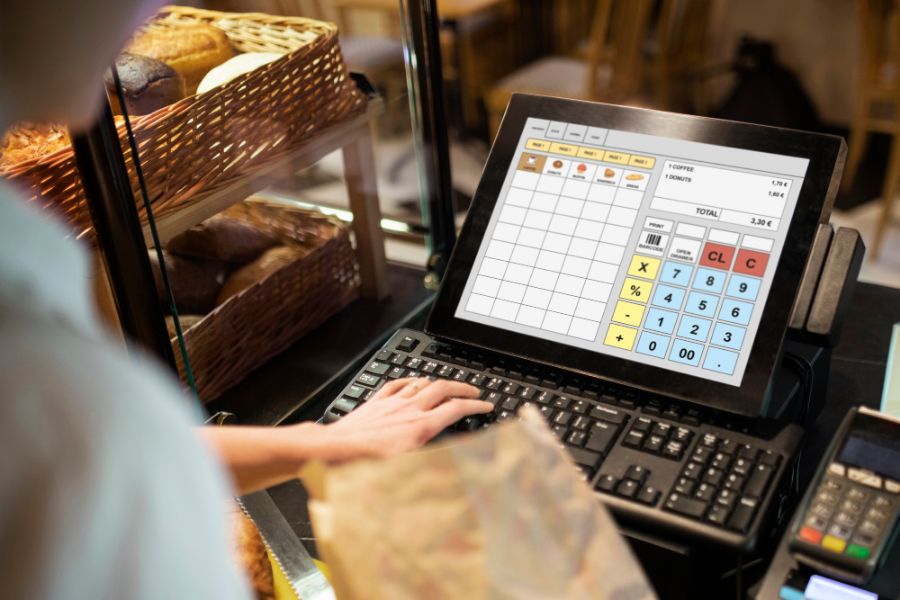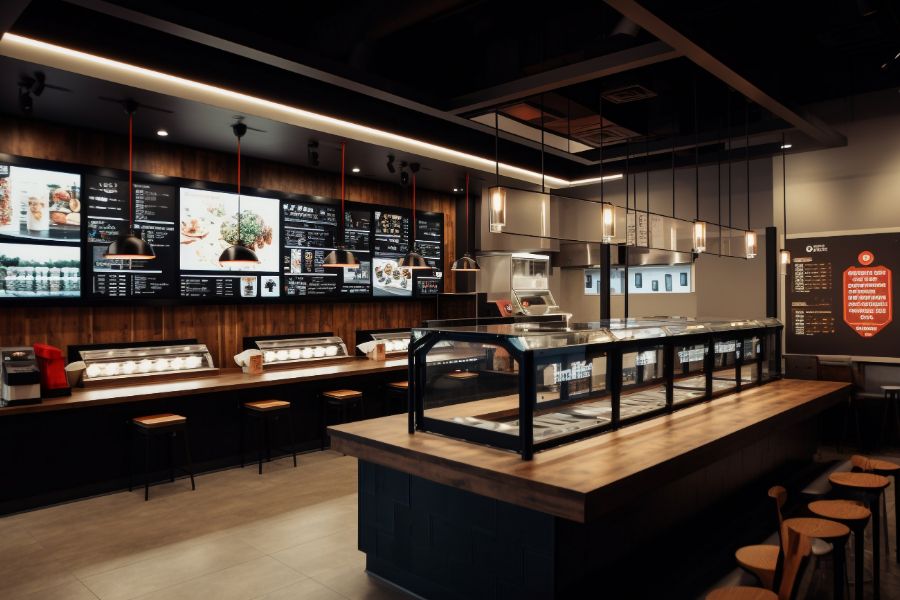Efficiently managing inventory across multiple shop locations is a multifaceted task that requires strategic planning and the right tools. This comprehensive guide delves into the challenges and best practices associated with multi-location inventory management. From navigating communication hurdles to optimizing your approach using ConnectPOS, this article offers insights to enhance your inventory management strategies and streamline operations.
Challenges Of Inventory Spread Across Multiple Shop Locations
Managing inventory across multiple shops presents a complex web of challenges that require strategic planning, robust technology solutions, and efficient processes. Three of the most critical challenges include communication hurdles, inconsistent inventory standards, and a centralized, synchronized system. Let’s go deeper into these challenges:
Communication Challenges
Effective communication is the linchpin of successful multiple shop inventory management. The intricacies of maintaining inventory levels, responding to demand fluctuations, and ensuring timely replenishments are heavily dependent on seamless communication. But several barriers might prevent this from happening:
- Geographical Dispersion: When locations are spread across different regions or even countries, time zones, cultural nuances, and language barriers can lead to miscommunication and delays in transmitting crucial information.
- Communication Channels: Different locations might have distinct preferences for communication channels, ranging from emails and phone calls to various messaging platforms. This can result in fragmented communication, leading to information gaps and misunderstandings.
- Lack of Face-to-Face Interaction: Face-to-face interactions can facilitate deeper understanding and quick issue resolution. The absence of in-person meetings can lead to a lack of personal connection and reduced effectiveness in addressing complex inventory challenges.
- Complexity of Data Exchange: Sharing inventory data accurately and comprehensively between locations can be a daunting task, especially when relying on manual methods or disparate systems. This can result in discrepancies and confusion.
To overcome these communication challenges in multiple shop inventory management, organizations should prioritize the establishment of standardized communication protocols, invest in collaborative digital tools that transcend time zones, and promote regular virtual meetings to ensure a consistent flow of information.
Inconsistent Inventory Standards
Maintaining uniform inventory standards across multiple shops is essential to ensure accurate tracking, reporting, and decision-making. Challenges in this area include:
- Diverse Terminology: Locations might use different names or codes for the same items, leading to confusion when aggregating data or making interlocation comparisons.
- Varied Units of Measurement: Discrepancies in units of measurement can distort inventory calculations, making it difficult to assess stock levels and movement across different sites accurately.
- Categorization Differences: Items might be categorized differently at each location, complicating efforts to analyze inventory trends and optimize stock levels globally.
- Regulatory Variations: Different regions might have distinct regulatory requirements for inventory management, leading to inconsistencies in record-keeping and reporting practices.
Organizations should emphasize standardization efforts by implementing a common inventory classification system, uniform units of measurement, and standardized terminology to address inconsistent standards for multiple shop inventory. Regular training and communication between locations can help reinforce these standards.
Lack of a Centralized, Synchronized System
The absence of a centralized inventory management system can hinder efficient inventory control and decision-making. However, a significant majority of retailers, comprising 72%, intend to transform their supply chain operations by incorporating real-time visibility through automation, sensors, and analytics. This indicates a recognition of the need to address these challenges and embrace technology-driven solutions to optimize multiple shop inventory management.
- Data Silos: When each location operates its inventory management system, data silos emerge, impeding real-time collaboration and leading to fragmented views of overall inventory levels.
- Delayed Information Sharing: Without a centralized system, updating and sharing inventory data between locations can be time-consuming, leading to outdated information that affects inventory replenishments and forecasts.
- Limited Visibility: A lack of synchronization makes gaining a holistic view of inventory movements, levels, and trends across the entire organization is challenging. This hampers effective inventory optimization and distribution.
- Complex Reporting: Generating comprehensive reports that encompass data from various locations can be labor-intensive and prone to errors due to manual data compilation.
Organizations should invest in a robust, centralized inventory management system that facilitates real-time data sharing, synchronization, and reporting to mitigate these challenges in multiple shop inventory management. This system should allow for easy data integration from various locations, ensuring that decision-makers have accurate and up-to-date information at their fingertips. Additionally, change management strategies should be employed to ease the transition to the new system, including training sessions to ensure all staff members are adept at using the technology effectively.
Overall, managing inventory across multiple shops is a multifaceted endeavor that demands addressing communication, standardization, and system synchronization challenges. By strategically approaching these challenges, organizations can establish streamlined processes, enhance data accuracy, and optimize inventory management practices across diverse locations.
Best Practices For Multiple Shop Inventory Management
Managing inventory across multiple locations can be a complex task that requires careful planning, organization, and efficient tools. Implementing best practices can streamline operations, reduce costs, and improve customer satisfaction. Here are five best practices for effective multiple shop inventory management:
Use Cloud-Based Inventory Management Software
Cloud-based inventory management software is a crucial tool for efficiently managing multiple-shop inventory. This software offers real-time visibility into inventory levels, sales trends, and order status from various locations. Some benefits of using cloud-based software include:
- Centralized Data: All your inventory data is stored in a centralized system accessible from anywhere, enabling real-time collaboration and decision-making.
- Automatic Updates: Cloud-based systems receive regular updates, ensuring your software is always up-to-date with the latest features and security patches.
- Scalability: As your business grows, cloud-based systems can easily scale to accommodate the increasing volume of inventory and transactions.
- Integration: Many cloud-based inventory management systems can integrate with other software, such as point-of-sale systems, e-commerce platforms, and accounting software.
As companies expand and evolve, embracing cloud-based inventory management software becomes a key step toward achieving operational excellence and maintaining a competitive edge in the market.
Set Up Your Reports
Accurate reporting is essential for understanding your inventory performance and making informed decisions. Create customized reports that provide insights into key metrics such as stock levels, turnover rates, lead times, and order history. This helps you:
- Identify Trends: Analyze historical data to identify seasonality, demand fluctuations, and slow-moving items, allowing you to adjust your inventory strategy accordingly.
- Forecast Demand: Use historical data and market trends to forecast future demand, ensuring you have the right stock levels to meet customer needs.
- Reduce Excess Inventory: Monitor slow-moving items and adjust reorder points to avoid overstocking, which ties up capital and increases storage costs.
- Prevent Stockouts: Keep track of inventory levels to avoid stockouts, which can lead to lost sales and dissatisfied customers.
Setting up comprehensive reports is fundamental in successful inventory management across multiple shops. The insights derived from these reports empower businesses to recognize patterns, forecast demand, and proactively manage inventory levels
Optimize Your Merchandise Planning
Effective merchandise planning involves accurately predicting demand, setting appropriate stock levels, and managing replenishment effectively. Key strategies include:
- ABC Analysis: Categorize your inventory based on value (high-value, medium-value, and low-value items). Allocate more attention to high-value items and ensure they are well-stocked while adopting more flexible strategies for low-value items.
- Safety Stock: Set safety stock levels to buffer against demand variability and supply chain disruptions.
- Economic Order Quantity (EOQ): Calculate the optimal order quantity that minimizes carrying and order costs.
- Reorder Points: Determine the inventory level you need to reorder to avoid stockouts.
By implementing these approaches, organizations can fine-tune their inventory management practices, improve customer satisfaction, and optimize operational efficiency, all while navigating the complexities of multiple shop inventory management successfully.
Audit Your Inventory at All Locations
Regular physical inventory audits are essential to maintain accuracy and reduce discrepancies. Conduct cycle counts (counting a subset of inventory items regularly) and full physical counts periodically. This practice helps:
- Detect Errors: Identify discrepancies between the recorded inventory levels and physical counts.
- Prevent Theft and Shrinkage: Regular audits discourage employee theft and help prevent losses due to inventory shrinkage.
- Improve Accuracy: By addressing discrepancies promptly, you maintain accurate inventory records and improve order fulfillment accuracy.
Regular audits contribute to the overall health of multiple shop inventory systems, ensuring that discrepancies are promptly addressed, and business operations continue to run smoothly.

Hire for Specific Inventory-Related Positions
Dedicated personnel can significantly improve the efficiency of your multiple-location inventory management:
- Inventory Manager: This person oversees the overall inventory strategy, ensures alignment with business goals, and manages inventory-related processes and teams.
- Demand Planner: Responsible for forecasting demand, analyzing market trends, and coordinating inventory levels to meet customer needs.
- Logistics Coordinator: Manages inventory movement between locations, optimizing shipping methods and minimizing transit times.
- Data Analyst: Analyzes inventory data to identify patterns, trends, and opportunities for optimization.
These roles synergize to uphold accuracy, meet customer demands, and foster a well-structured approach to inventory management across diverse locations. Their contributions bolster not only operational efficiency but also customer satisfaction, ultimately contributing to the business’s overall success.
Managing multiple shop inventories requires advanced software, strategic planning, accurate reporting, and dedicated personnel. By implementing these best practices, you can maintain optimal inventory levels, reduce costs, enhance customer satisfaction, and position your business for growth in a competitive market.
Why You Should Choose ConnectPOS In Managing Inventory Across Multiple Shop Locations
Managing inventory across multiple shops can be a complex task that requires efficiency, accuracy, and real-time synchronization. ConnectPOS is a comprehensive point-of-sale (POS) and inventory management solution that offers several benefits for effectively handling multiple shop inventories. Here’s an in-depth look at why you should consider ConnectPOS:
- Centralized Inventory Management: ConnectPOS provides a centralized system to manage inventory data, sales, and customer information across all your shop locations. This eliminates the challenges of disparate systems and data silos, giving you real-time visibility into inventory levels, sales trends, and customer behavior.
- Real-time Synchronization: ConnectPOS offers real-time synchronization of inventory data between different shop locations. This means that when a sale is made at one location, the inventory levels are instantly updated across all other locations. This prevents stockouts and overstock situations and reduces the chances of selling products out of stock.
- Multiple Shop Inventory Tracking: With ConnectPOS, you can efficiently track inventory levels at each shop location. This enables you to make informed decisions about stock replenishment, transfers, and promotions based on actual inventory data.
- Centralized Reporting and Analytics: ConnectPOS provides robust reporting and analytics tools that allow you to generate consolidated reports across all shop locations. You can analyze sales trends, inventory turnover rates, and other key metrics to make data-driven decisions that optimize your inventory strategy.
- Omni-channel Integration: ConnectPOS supports integration with various e-commerce platforms, allowing you to seamlessly manage inventory for your physical shops and online stores. This integration ensures that inventory information is consistent across all sales channels, reducing the risk of overselling or underselling products.
- Flexible Order Fulfillment: This POS enables flexible order fulfillment options, such as “buy online, pick up in-store” or “ship from store.” This allows customers to choose the most convenient way to receive their orders while optimizing inventory utilization across multiple locations.
- User-friendly Interface: ConnectPOS offers an intuitive and user-friendly interface that is easy to navigate for your staff members across different shop locations. This reduces the learning curve and ensures consistent inventory management practices.
- Integration with Barcode Scanners: ConnectPOS integrates seamlessly with barcode scanners, making the inventory management process faster and more accurate. Scanning barcodes during sales and restocking helps minimize human errors and ensures precise inventory tracking.
- Multi-currency and Multi-language Support: If you have shop locations in different countries or regions, ConnectPOS supports multi-currency and multi-language capabilities. This makes conducting transactions, managing inventory, and serving customers in their preferred currency and language easier.
- Customer Relationship Management (CRM): This POS solution includes CRM features that allow you to track customer preferences, purchase history, and loyalty programs across all shop locations. This enhances customer experience and enables personalized marketing strategies.
- Cloud-based Accessibility: Being a cloud-based solution, ConnectPOS offers the advantage of remote access. You can monitor and manage inventory across all shop locations from anywhere, providing flexibility and enabling quick decision-making.
Overall, choosing ConnectPOS for managing inventory across multiple shop locations offers a comprehensive solution that addresses the challenges of multiple shop inventory management. Its centralized approach, real-time synchronization, reporting capabilities, and omnichannel integration contribute to improved efficiency, accuracy, and customer satisfaction.
Conclusion
Managing inventory across multiple shop locations demands precision and adaptability in the dynamic retail landscape. By understanding the challenges, implementing best practices, and harnessing the power of ConnectPOS, businesses can master the art of multi-location inventory management. This guide equips you with the knowledge to achieve efficient stock control, improve customer experiences, and drive growth in a competitive marketplace. Don’t hesitate to reach out to us for any consultation concerning ConnectPOS.
ConnectPOS is a all-in-one point of sale solution tailored to meet your eCommerce POS needs, streamline business operations, boost sales, and enhance customer experience in diverse industries. We offer custom POS with features, pricing, and plans to suit your unique business requirements.




